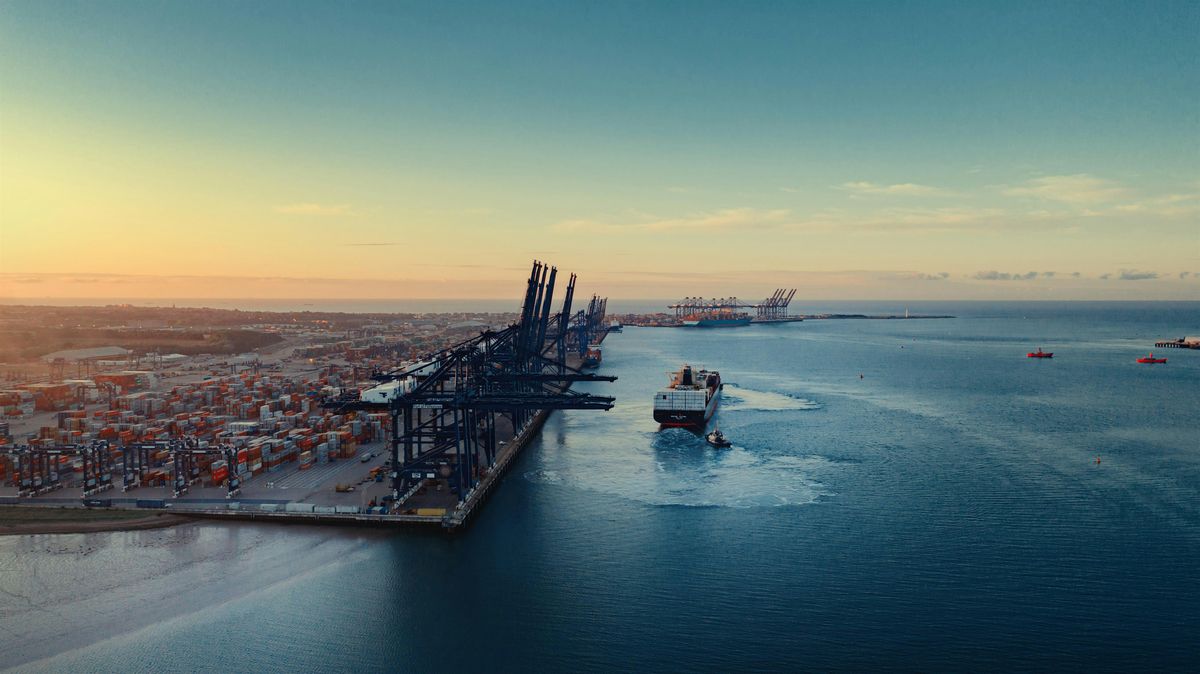
About this Event
Gard
Founded in Arendal, Norway in 1907, Gard is a leading provider of P&I, marine and energy insurance products with a global portfolio and offices worldwide. As a mutual, it is shipowner-controlled and provides shipowners and operators, shipyards, contractors, energy companies and windfarm operators with insurance products that offer financial protection and practical assistance when disaster strikes. It is also the largest Protection & Indemnity insurer among the 12 P&I clubs that are members of the International Group of P&I Clubs. Through its focus on enabling sustainable maritime development, Gard sees its role as a leading marine insurer to support members and clients through the green transition. Not only by providing the insurance covers needed, but also by engaging directly with the research community and other stakeholders.”
IML
A distinctive and world renowned part of the Southampton Law School, the Institute of Maritime Law (IML) was founded in 1982 as the first of its kind in the world. The IML fosters research and education in maritime law at Southampton and has an international reputation as a world-leading centre in Maritime Law, providing continuing professional education and advising businesses, regulatory bodies and governmental organisations. The membership of IML comprises leading academics and distinguished external experts. Over the past half century, the IML has trained the vast majority of practitioners operating across the world in the shipping industry through its dedicated LLM in Maritime Law and professional courses.
SMMI
The Southampton Marine and Maritime Institute (SMMI) is the largest entity of its kind in the world, with expertise across ocean-facing domains from marine science, naval architecture to the social sciences. The SMMI is a community of more than 350 specialists who work across academic divides, and in partnership with external organisations, to address issues in the natural ocean environment (marine) and human use of the sea (maritime). The SMMI enables new research collaborations, educates the next generation of marine and maritime leaders, and generates knowledge and intelligence for businesses, educators and policy makers.
Public Policy|Southampton is the University of Southampton's dedicated unit to assist researchers to connect with policymakers through fellowship programmes, capacity building and engagement activities to better support evidence-informed policymaking.
Nature of the Event
The Event aims at analysing the impact of the 2023 High Seas Treaty with the view of identifying possible obstacles in terms of implementation and suggest the way forward.
The Treaty contains many ambiguities, none more so than the applicability of the ‘common heritage’ and ‘freedom of the seas’ principles. The issue area most impacted is marine genetic resources (MGRs). Historically, the application of ‘common heritage’ to resources in the Area (minerals) was understood to involve monetary benefits upon commercialisation.
Indeed, the International Seabed Authority is actively working on the mechanism for such benefit sharing. For MGRs, the question of benefit sharing – when it should happen and what it should include – was especially contentious. Developed states are worried that ‘common heritage’ might go too far and impinge upon ‘freedoms of the seas’ associated with resource privatisation. The G77 and other developing states preferred a more precise and obligatory set of rules for benefit sharing.
The final treaty text contains two areas of fundamental ambiguity, where interpretation and implementation really matter: First, the final treaty text contains no article on intellectual property rights. This is concerning because of the inherent clash between patents and shared access, which will require legal interpretations across treaties. The idea that the Treaty “should not undermine” existing agreements was ambiguous from itinception, and negotiations did not produce a consensus on its specific meaning.
Second, the final treaty text assigns key decisions about monetary benefit sharing to institutions that have yet to be established – the Conference of Parties (COP) and the Access and Benefit Sharing committee. Much remains to be determined, decided, and delivered about the modalities of benefit sharing from MGRs.
Areas Beyond National Jurisdiction
The Treaty applies to the Areas Beyond National Jurisdiction (ABNJ), which means both the high seas and the Area as defined under UNCLOS. The high seas are the sea surface and water column beyond the Exclusive Economic Zone (EEZ), and the Area is the seafloor and subsoil beyond the continental shelf.
The high seas and Area are not co-extensive – the limit of the EEZ is 200 nautical miles, but coastal states can extend their continental shelf beyond 200 nautical miles in certain circumstances (and over 80 states have done or are doing so). The way the high seas and the Area are managed is very different. Activities in the high seas are governed by a variety of regional and sectoral organizations, whereas activities in the Area are governed by the International Seabed Authority.
Most importantly, different governance principles underlie the high seas and the Area. The high seas regime reflects the open access ‘freedom of the seas’ principle, with a history that can be traced back to at least the 1600s. This principle favours maritime ‘users,’ who have clear ‘freedoms’ (rights) to access, exploit, and otherwise use high seas resources. In contrast, the Area reflects the more progressive ‘common heritage of humankind’ principle, which declares that the Area and its resources belong to all humanity.
When ‘common heritage’ resources are used, the benefits should be equitably shared. This principle can be traced back to the late 1960s and reflects the goals and interests of developing and land-locked countries in the more equitable and sustainable utilization of ocean resources. Its central presence in UNCLOS was a major victory for the Group of 77 (G77) coalition.
The principle of the common heritage of humankind
The Treaty contains both principles. Article 7 on ‘General principles and approaches´ includes the “[t]he principle of the common heritage of humankind” (supported by the 134 members of the G77 as well as Mexico, Turkey, Palau, and others).
The addition of “[t]he freedom of marine scientific research, together with other freedoms of the high seas” was proposed by developed countries in the overtime hours of the final negotiation session, despite having never been present in earlier drafts. The applicability of these two principles to the Treaty issue areas, and especially to Marine Genetic Resources, was contentious throughout the negotiations, and will likely continue to be a source of tension in the interpretation and implementation of the agreement.
The pressure to finalize a treaty text revealed the depth of commitment on both sides. In the end, compromise was reached such that both principles were included in the agreement.
The High Seas Treaty definition problem
The name ‘High Seas Treaty’ implies that the treaty is about the high seas only, and therefore reflective of the ‘freedom of the seas’ principle. This is inaccurate – it wholly overlooks the Area – and creates bias in how we understand the treaty.
That choice of name gives rise to three basic problems:
(1) It misrepresents the scope of the Treaty, ignoring the international seabed (Area);
(2) It elevates the freedom of the seas principle to the detriment of the common heritage of humankind principle; and
(3) It excludes the focus of the agreement which is biodiversity, and specifically reversing biodiversity loss.
These problems will grow in significance as we enter the implementation phase of the treaty.
The Event is devised as a problem-solving debate: each panel will be structured into individual 15-minutes interventions (a total of four presentations for each panel), followed by questions and an overall panel discussion which will address the main issues introduced by each intervention, with a view to identifying outcomes and solutions.
Event Venue & Nearby Stays
National Oceanography Centre, European Way, Southampton, United Kingdom
USD 0.00








